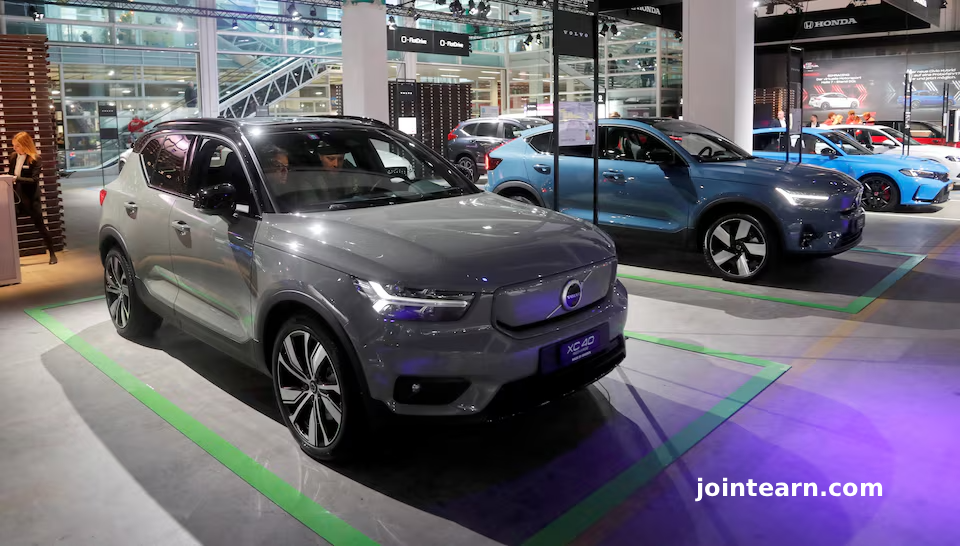
Volvo Cars Posts Stronger-Than-Expected Profit, Shares Jump to 18-Month High
Stockholm, October 23, 2025 – Volvo Cars (VOLCARb.ST) delivered a surprise profit surge in the third quarter of 2025, driven by accelerated cost-cutting measures and strategic realignment under returning CEO Håkan Samuelsson, sending its shares soaring more than 25% — their best single-day performance in over a year.
Despite global economic headwinds, tariffs, and fierce competition in the electric vehicle (EV) sector, Volvo’s operating profit before one-off items hit 5.9 billion Swedish crowns ($627 million) in July–September, far exceeding analysts’ forecasts of 1.6 billion crowns, according to data from Bernstein.
The Swedish automaker, majority-owned by China’s Geely Holding, saw its gross margin climb to 24.4%, up from 17.7% in the previous quarter, showcasing the success of its aggressive restructuring and cost reduction program.
Cost-Cutting Strategy Delivers Results Sooner Than Expected
Volvo Cars attributed its stronger-than-expected profitability to multiple efficiency initiatives, including a facelift of the best-selling XC60 model, deeper supply chain collaboration with Geely, and 3,000 job cuts aimed at streamlining operations.
Chief Executive Håkan Samuelsson, who returned earlier this year to stabilize the company’s finances, expressed optimism about the pace of progress.
“What we’re now seeing is really, wow, okay — this is delivering faster than we thought and faster than we planned,” Samuelsson told Reuters.
Samuelsson, who previously led Volvo for more than a decade, has pivoted the company’s focus from growth and market share toward cash flow and profitability, marking a significant strategic shift.
Analyst Reactions: “Internally Driven Success Story”
Analysts praised Volvo’s management for engineering an internal turnaround despite external challenges.
Hampus Engellau, automotive analyst at Handelsbanken, said:
“When Håkan rejoined as CEO, he came in with open eyes, switching the focus for the group from expansion to efficiency. This result is very much internally generated — they haven’t had much help from the market.”
Volvo’s strong results also came as French rival Renault posted better-than-expected quarterly earnings, signaling improving resilience across the European auto sector.
U.S.–EU Trade Deal Brings Tariff Relief
A key factor supporting Volvo’s outlook is the recent U.S.–EU trade agreement, which reduced import tariffs on European cars from 27.5% to 15% effective August 1, retroactively.
Volvo, one of the European carmakers most exposed to U.S. tariffs — with many American-bound vehicles exported from Europe — expects the deal to significantly reduce costs and improve pricing competitiveness in the U.S. market.
Samuelsson welcomed the development but acknowledged that challenges remain:
“We still face several challenges, including continued price competition and the effects of U.S. import tariffs,” he said. “However, the recent tariff agreement between the U.S. and EU offers much-needed clarity.”
The company has also announced plans to shift hybrid vehicle production to the U.S. in the coming years to further mitigate tariff exposure.
Sales Dip, But Margins Improve
Although Volvo’s overall sales dropped by 7% year-over-year, the company managed to offset lower volumes with improved margins and disciplined cost control.
Fully electric vehicles accounted for less than a quarter of total sales, underscoring the automaker’s continued reliance on hybrids and combustion models while it expands its EV portfolio, including the EX30 and EX90.
Market Reaction and Future Outlook
Volvo Cars’ stock surged 28% in early Stockholm trading, marking its best performance in over 18 months. Investors reacted positively to the profitability turnaround, cost discipline, and tariff relief.
Analysts at Bernstein and Handelsbanken both suggested that Volvo’s renewed management focus and leaner cost base could sustain higher earnings in the coming quarters, particularly as global EV demand stabilizes.
Key Takeaways
- Operating profit: 5.9 billion SEK ($627 million) vs. forecast of 1.6 billion SEK
- Share price: +25% in early trading, strongest rise since 2024
- Gross margin: 24.4%, up from 17.7% last quarter
- Sales: Down 7% year-over-year
- Electric vehicles: 24% of total sales
- Tariffs: Reduced to 15% on U.S. imports from Europe
- Leadership: CEO Håkan Samuelsson spearheads cost-cutting and efficiency drive


Leave a Reply